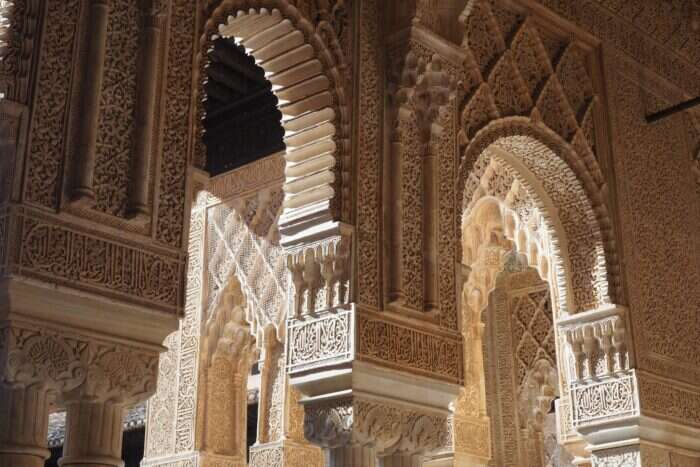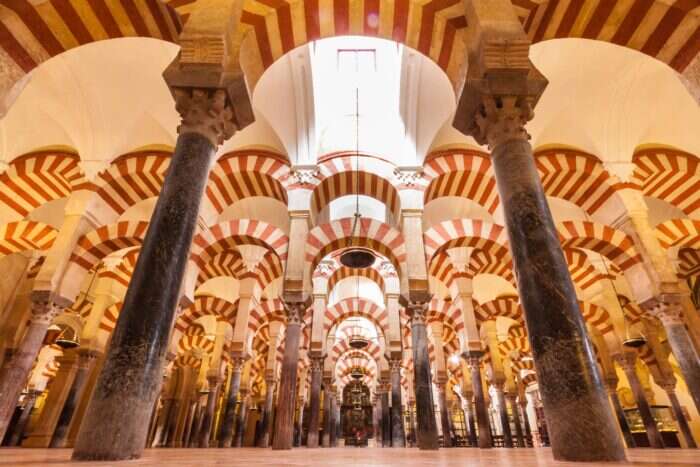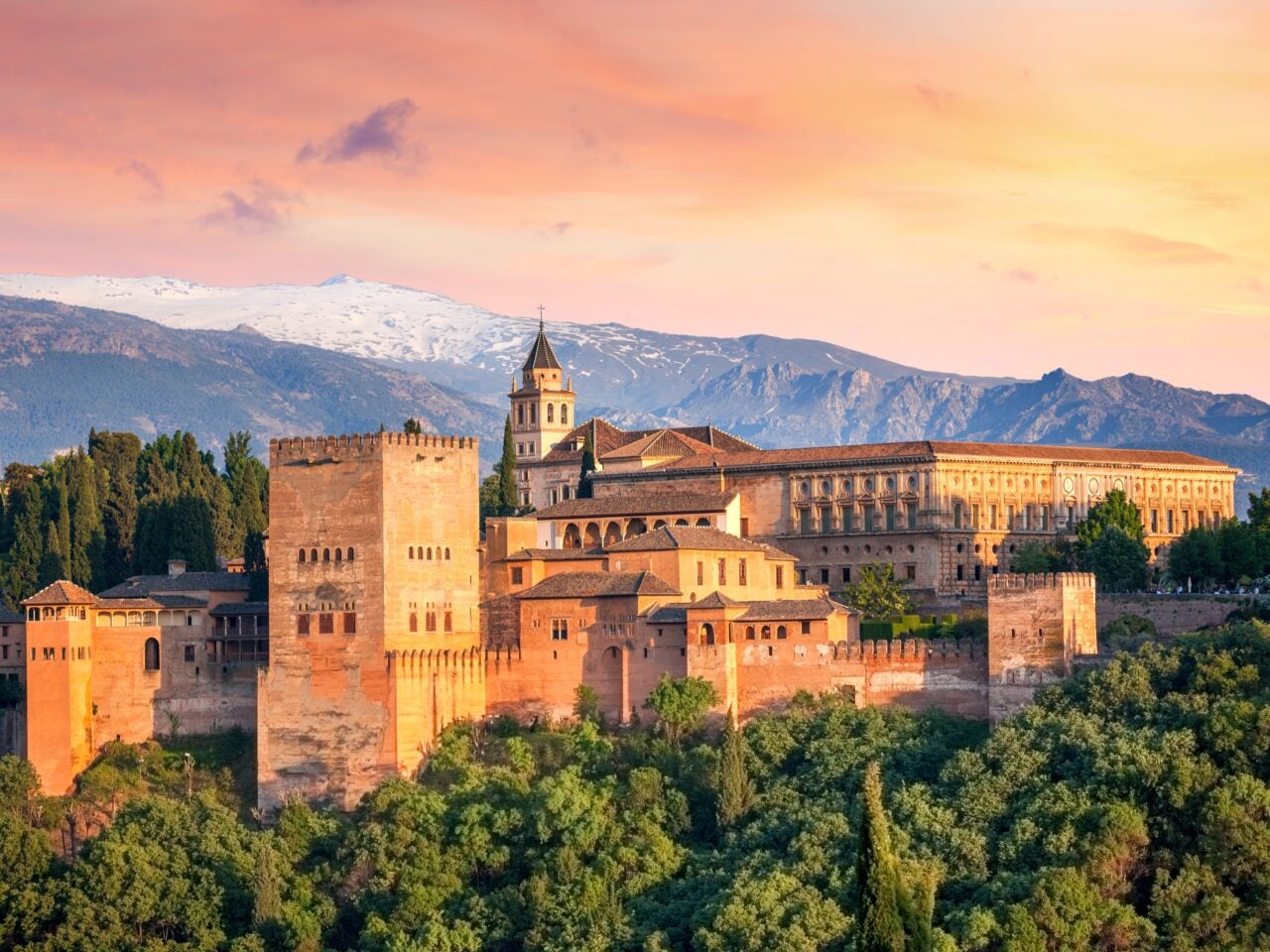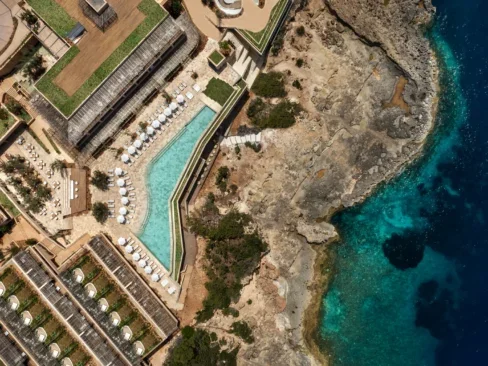As the bridging country between Africa and Europe, Spain boasts a patchwork of architectural styles, from the modern to the ancient, thanks to different religious ruling powers through the centuries – but none is more impressive than the Moorish designs that dominate in the south.
To help anyone heading to Europe with the hope of witnessing this distinctive ancient style for themself, we have rounded up the best of Moorish architecture and where to see it in Spain.
What is Moorish Spain?
Before heading off on a tour of the best Moorish sites in Spain, an understanding of what is meant by ‘Moorish’ is a must. In simple terms, Moorish people were Muslims from northern Africa who conquered the Iberian Peninsula (comprised of modern-day Portugal and Spain) in the 8th century, leading to a territory known as al-Andalus. The Moors ruled until around the 15th century, when Islamic troops fell to Christian forces.
With Moorish rule came the advent of a new architectural style that was previously unseen in Europe. Highly intricate carvings, ornate domed ceilings, symmetrical archways and geometric mosaic tiles are the most notable characteristics of Moorish design. In a testament to the unrivaled quality of the architecture, many of the finest examples are still standing today and remain just as impressive as the day they were erected.
[See also: The Must-See Royal Sites in Spain]
Where to See Moorish Architecture in Spain
As the Moors were most prominent in southern Spain, it is here that the best examples of Moorish architecture can be seen – primarily in three major Andalusian cities: Granada, Seville, and the old al-Andalus capital of Córdoba. All are conveniently within a three-hour drive of one another. In these sun-soaked southern cities, visitors can travel back in time to witness the impressive design prowess of the Moorish rulers.
Granada

Thanks to a careful restoration project, the Alhambra is now a beautiful homage to Moorish Spain / ©Shutterstock
As one of the most significant cities of the Moorish rule, Granada is awash with captivating architecture that harks back to the ancient era, but none more impressive than the domineering Alhambra. Overlooking the old Arabic quarter of Granada, the Alhambra palace is now designated as a Unesco World Heritage Site and attracts hundreds of thousands of visitors a year.
Originally built in the 13th – 14th centuries, the Alhambra has seen its fair share of damage in the past few thousands of years, from Spanish ruler Charles I who destroyed a portion of the palace in the 1500s, to French forces blowing up some of its towers in the 19th century.
However, thanks to a careful restoration project, the Alhambra is now a beautiful homage to Moorish Spain. Inside the Alhambra enclave you will find the Nasrid palaces, which are often regarded as some of the most impressive examples of Moorish design still on show today. The palaces boast the archetypal characteristics of impossibly intricate stone carvings, rainbowed mosaic patterns and ornate archways, as well as a series of original water features to ward off the heat of the Spanish sun.
[See also: An Art Trail Through Spain]
Seville

Throughout the palace gardens are shaded courtyards separated by laden fruit trees and glittering green pools / ©Shutterstock
As a city said to have been built by Hercules himself, Seville is not short of impressive architectural beauty. Visitors interested in Moorish history should head straight to the famed Royal Alcázar of Seville, which sits in the heart of the city.
In its lifetime the building has been home to many a significant figure including Moorish king Al-Mutamid, exiled French aristocracy and, for a short period, King Philip V – the upper quarters even still act as a residence for the current royal family when they visit.
Although much of the Alcázar has been destroyed and rebuilt throughout the years, this only adds to its beauty, with ornate Moorish details such as carved archways sitting alongside classic Gothic tapestries and paneling. The result is a stunning melting pot of the cultures that have dominated Spain throughout the years.
Surrounding the palace is an oasis of lush gardens. Throughout these gardens are shaded courtyards separated by laden fruit trees and glittering green pools. Such is the beauty of these gardens that they have been used as the setting for many a film and TV show – most recognizably as the Water Gardens in the fictional city of Sunspear in Game of Thrones.
Córdoba

The most recognizable element of the mosque is its column-filled prayer hall, featuring a geometric display of red and white striped arches / ©Shutterstock
One of the most famous examples of Moorish architecture in Spain, or indeed the rest of the world, can be witnessed in the Andalusian city of Córdoba. The La Mezquita mosque dates back to around 784 AD when then-ruler Abd ar-Rahman I purchased an existing church to erect a new site for the local Muslim community’s Friday prayers.
The mosque’s interiors are considered a marvel, with the design influencing a number of other significant Islamic buildings. The most recognizable element of the mosque is easily its column-filled prayer hall, featuring a geometric display of red and white striped arches. Elsewhere in the impressive mosque is an exquisite arched mihrab with intricate golden detailing, that is shadowed only by the lavish mosaic dome that towers above it.
Despite its Islamic origins, La Mezquita was repurposed as a Catholic church dedicated to the Virgin Mary following the Christian conquest of the city. However, despite its religious conversion, few amendments were made to the structure or design of the majestic building – bar the addition of a cathedral inside the mosque in the 16th century – meaning it can still be viewed in all its Moorish glory today.
In association with spain.info










